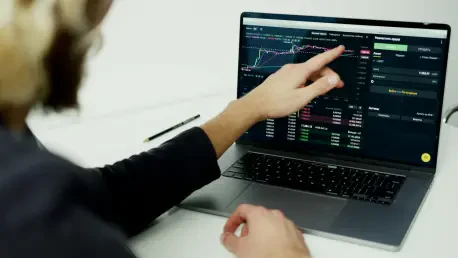In the fast-evolving world of financial markets this year, automated trading tools have emerged as game-changers, empowering traders to navigate complex landscapes with unprecedented speed and precision. These sophisticated software programs, known as trading bots, are designed to execute strategies across diverse asset classes like cryptocurrencies, stocks, forex, and futures without the interference of human emotion. Picture a relentless system that monitors market fluctuations around the clock, seizing opportunities in milliseconds while adhering strictly to predefined rules. This level of efficiency is no longer a luxury but a necessity for staying competitive. However, with a plethora of options flooding the market, selecting the right bot can be a daunting task. This comprehensive guide aims to illuminate the leading automated solutions available now, focusing on performance, usability, and adaptability to various trader needs. By delving into the mechanics, benefits, and potential risks of these tools, alongside in-depth evaluations of standout platforms, the goal is to equip traders with the knowledge to make informed decisions. Whether a novice or a seasoned professional, the insights provided here will help harness the power of automation to elevate trading outcomes in today’s dynamic environment.
The Rising Importance of Automation in Trading
The significance of trading bots in the current financial ecosystem cannot be overstated, as they have transitioned from niche tools to essential components for traders of all levels. In a market where split-second decisions can mean the difference between profit and loss, automation provides an unmatched advantage by executing trades at speeds unattainable by humans. These systems operate tirelessly, scanning for opportunities across global markets without succumbing to fatigue or distraction. Beyond speed, they offer a critical shield against emotional biases—such as fear or greed—that often derail manual trading efforts. By adhering to logic-driven strategies, bots ensure consistency even amidst volatility, a feature that resonates deeply with traders aiming to maintain discipline. Their ability to function 24/7 is particularly vital in markets like cryptocurrencies, which never pause, allowing users to capitalize on price movements at any hour. As technology continues to advance, the accessibility of these tools has broadened, leveling the playing field between retail investors and institutional giants. This democratization underscores why adopting automation is not just a trend but a strategic imperative for anyone serious about trading success.
Moreover, the integration of cutting-edge technologies like artificial intelligence and machine learning has further elevated the capabilities of trading bots, making them more adaptive to shifting market dynamics. These advanced systems can analyze vast datasets, identify patterns, and even predict potential trends with a precision that manual analysis struggles to match. For traders, this translates into a greater ability to refine strategies based on real-time insights rather than gut feelings or outdated information. However, while the allure of automation is strong, it comes with the need for a solid understanding of market principles to maximize effectiveness. Bots are not standalone solutions but tools that require thoughtful setup and periodic adjustment to align with individual goals. The growing reliance on such technology also reflects a broader shift in trading culture, where data-driven decision-making is becoming the norm. As more individuals recognize the value of removing human error from the equation, the adoption of automated systems is poised to shape the future of financial markets over the coming years, starting now through at least 2027.
Understanding the Mechanics Behind Trading Bots
At the heart of trading bots lies a complex yet fascinating framework of algorithms that dictate every buy, sell, or hold decision based on real-time market data, ranging from straightforward conditional rules to intricate models. These algorithms can vary from simple instructions—such as executing a trade when a specific price threshold is crossed—to sophisticated systems that process thousands of variables simultaneously. Through API integrations, bots establish a direct connection with trading platforms, enabling them to access live data feeds and place orders with remarkable speed. This seamless interaction is what allows automation to outperform human traders in terms of reaction time, especially in high-frequency trading scenarios where milliseconds matter. The underlying technology ensures that once parameters are set, the bot operates with unwavering discipline, free from the hesitations that often plague manual trading. Understanding this operational backbone is crucial for traders aiming to leverage these tools effectively, as it highlights both the power and the boundaries of what automation can achieve in volatile environments.
Customization stands as another pivotal aspect of how trading bots function, offering flexibility to align with diverse trading styles, whether focused on short-term scalping or long-term investing. Traders can adjust settings like entry and exit points, risk tolerance, and position sizes to mirror their unique strategies, ensuring the bot acts as an extension of their vision rather than a generic solution. Some platforms even incorporate advanced predictive modeling through AI, allowing the bot to evolve by learning from past market behaviors and adapting to new patterns. However, this customization demands a balance—overcomplicating parameters can lead to inefficiencies or errors if not carefully monitored. The mechanics also reveal a dependency on reliable technology; any disruption in API connectivity or data accuracy can compromise performance. Thus, while the operational design of bots offers immense potential for precision, it also underscores the importance of ongoing oversight to address technical or strategic misalignments that could arise during live trading.
Spotlight on Leading Automated Trading Platforms
Among the myriad of options available, Emerald Edge emerges as a powerhouse, particularly for futures traders focusing on the Nasdaq (NQ) ticker through NinjaTrader integration. Renowned for its exceptional performance, this bot processes over 3,400 data points using custom indicators to detect trend shifts and momentum across multiple timeframes. Its dynamic stop-loss engine adjusts protections based on recent price ranges, while personalized onboarding and expert support add significant value for users. However, its current limitation to a single ticker and likely premium pricing may deter those seeking broader market coverage or budget-friendly options. Tailored for serious traders, this platform exemplifies institutional-grade automation, blending algorithmic precision with human insight to deliver results that stand out in competitive markets. For those willing to invest in both cost and learning, it offers a robust foundation for tackling futures with confidence.
Another standout is TrendSpider, celebrated for its advanced charting and strategy automation capabilities, catering to traders who prioritize technical analysis. With AI-driven trendlines, multi-timeframe analysis, and built-in backtesting, it empowers users to craft and test strategies without coding expertise. Dynamic alerts for complex conditions and broker integrations further enhance its appeal for executing trades seamlessly. Yet, its steeper learning curve and higher cost structure might pose challenges for beginners or those with limited budgets. Designed for intermediate to advanced traders, this tool excels in providing depth for strategy development, though it demands time and dedication to unlock its full potential. Its focus on precision and adaptability makes it a valuable asset for those who thrive on data-driven decision-making.
Rounding out the top tier are platforms like StockHero, Coinrule, and Pionex, each addressing distinct trader needs with unique strengths. StockHero offers a no-code, cloud-based interface for custom bot creation, ideal for beginners with its drag-and-drop simplicity and pre-built strategy templates. Coinrule, similarly beginner-friendly, uses an intuitive “if-this-then-that” setup across numerous exchanges, though it lacks depth for advanced customization. Pionex, meanwhile, combines a crypto exchange with over 16 free built-in bots, boasting low trading fees and regulatory compliance, but it remains confined to cryptocurrency markets. While StockHero and Coinrule may fall short for professionals needing complex logic, and Pionex lacks flexibility, all three democratize automation for newer traders. Together, these platforms showcase the diversity of solutions available, ensuring there’s a fit for varying skill levels and market focuses.
Essential Features to Seek in Trading Bots
When evaluating trading bots, transparency tops the list of critical attributes, as it builds trust and informs decision-making, ensuring traders can make informed choices with confidence. Platforms should provide detailed performance histories, clear explanations of their strategies, and upfront risk disclosures to avoid misleading users. A lack of verifiable data or vague claims about returns often signals unreliability, making it imperative to prioritize bots with documented track records. Additionally, robust customer support through multiple channels—be it email, chat, or forums—ensures assistance is available when issues arise. Compatibility with preferred brokers and exchanges via secure API integrations is equally vital, as seamless connectivity prevents execution delays. By focusing on transparency and support, traders can avoid pitfalls and select tools that align with their operational needs, fostering confidence in automated processes.
Backtesting capabilities and usability are also non-negotiable features that distinguish high-quality bots from subpar alternatives. The ability to simulate strategies using historical data allows users to refine approaches without financial risk, providing insights into potential performance under different market conditions. An intuitive interface further enhances usability, enabling traders to set parameters and monitor activities without needing extensive technical expertise. Real-time data access ensures bots respond swiftly to price changes, while customizable settings cater to individual risk profiles and trading styles. Risk management tools, such as automatic stop-loss orders and position sizing controls, act as safeguards against unexpected downturns, protecting capital from rapid depletion. Collectively, these features create a framework for effective automation, balancing accessibility with the depth required for strategic success across diverse market environments.
Advantages That Make Bots Indispensable
One of the most compelling benefits of trading bots lies in their capacity to save time, a precious commodity in the high-stakes world of trading, where every second counts. By automating repetitive tasks like market monitoring and trade execution, these tools free up hours that would otherwise be spent glued to screens, analyzing charts, or second-guessing decisions. This efficiency allows traders to redirect their focus toward strategy development, research, or even personal pursuits, knowing that their bot is handling the operational grind. Particularly in markets that operate continuously, such as cryptocurrencies, this relentless functionality ensures no opportunity slips through due to human limitations like sleep or distraction. The time-saving aspect transforms not just trading workflows but also the broader approach to balancing professional and personal commitments, making bots a practical ally for busy individuals.
Beyond time efficiency, trading bots bring a level of emotional detachment that manual trading often lacks, ensuring decisions remain rooted in logic rather than impulse. Human traders frequently fall prey to psychological traps—panic-selling during downturns or overbuying in euphoric rallies—undermining even well-thought-out plans. Bots, by contrast, execute strictly based on predefined rules, maintaining consistency regardless of market turbulence. This disciplined adherence, coupled with rapid execution enabled by real-time data, provides a competitive edge in fast-moving environments where delays can be costly. Additionally, features like backtesting allow for strategy validation before live deployment, minimizing guesswork. Together, these advantages position trading bots as indispensable for achieving precision and reliability, fundamentally altering how traders engage with volatile financial landscapes.
Navigating the Risks and Challenges of Automation
Despite their many strengths, trading bots are not without significant limitations that require careful consideration before full reliance. A primary concern is their inability to adapt to unforeseen events, such as geopolitical crises or sudden regulatory announcements, which can dramatically alter market conditions. Unlike human traders who can interpret breaking news or contextual shifts, bots operate solely on programmed logic, often continuing to execute trades that may no longer be viable. This rigidity necessitates active oversight, ensuring manual intervention when external factors fall outside the bot’s analytical scope. Acknowledging this gap highlights the importance of viewing automation as a complementary tool rather than a complete replacement for human judgment, especially in unpredictable scenarios that demand nuanced responses beyond algorithmic capacity.
Technical vulnerabilities further compound the risks associated with trading bots, as their performance hinges on stable infrastructure that isn’t always guaranteed, making them susceptible to various disruptions. Network outages, API disruptions, or software glitches can interrupt operations, leading to missed trades or erroneous executions at critical moments. Over-optimization presents another challenge, where strategies fine-tuned to historical data fail to perform in live markets due to evolving dynamics. Perhaps most alarming is the potential for amplified losses during volatility if risk management settings are inadequate—bots will follow instructions without hesitation, even into a downward spiral. Traders must prioritize protective mechanisms and maintain realistic expectations, recognizing that automation enhances but does not guarantee success. Diligent monitoring and periodic reassessment are essential to mitigate these challenges and safeguard investments.
Identifying Warning Signs in Trading Bot Selection
A critical step in adopting automation involves recognizing red flags that could indicate an unreliable or fraudulent trading bot, thereby preventing costly missteps. Promises of guaranteed profits stand out as a glaring warning sign, as no tool can predict market movements with absolute certainty, regardless of sophistication. Platforms lacking verifiable performance data or transparent user feedback often hide shortcomings, making thorough research a prerequisite before commitment. Hidden fees or unclear pricing structures also signal potential exploitation, as reputable bots disclose costs upfront. Traders should approach such offerings with skepticism, opting instead for solutions that prioritize honesty over hype. By staying vigilant, it’s possible to filter out dubious options and focus on tools with proven credibility in the crowded automation space.
Testing and caution form the bedrock of a prudent selection process when it comes to trading bots, ensuring investments are not squandered on untested promises. Utilizing free trials or paper trading features allows evaluation of a bot’s performance in a risk-free environment, offering insights into its real-world applicability. Additionally, poor or nonexistent customer support is a telltale sign of a problematic platform, as reliable bots typically provide accessible assistance for troubleshooting. It’s also wise to avoid committing funds beyond one’s risk tolerance, particularly with unproven tools, as the potential for rapid losses looms large without proper safeguards. Conducting due diligence—reading reviews, comparing features, and starting small—helps navigate the pitfalls of selection, empowering traders to make choices grounded in evidence rather than speculation or aggressive marketing tactics.
Determining the Right Fit for Trading Bot Users
Trading bots cater to a wide spectrum of users, from novices dipping their toes into financial markets to seasoned professionals seeking refined automation, demonstrating their versatility across experience levels. For beginners, platforms with intuitive designs and minimal technical barriers offer an accessible entry point into automated trading. These users benefit from simplified interfaces and pre-configured strategies that reduce the learning curve while still delivering efficiency. Basic market knowledge remains advantageous, as it helps in setting realistic parameters even with user-friendly tools. The availability of demo accounts or paper trading further supports new traders by allowing practice without financial exposure. This accessibility ensures that automation is not an exclusive domain but a resource for anyone motivated to enhance their trading journey with disciplined execution.
For intermediate and advanced traders, the appeal of trading bots lies in their capacity for deep customization and sophisticated analysis, unlocking potential that simpler tools cannot match. These users often seek platforms offering detailed control over strategy parameters, advanced charting, and integration with complex data models to fine-tune their approaches. The ability to leverage AI-driven insights or multi-timeframe analysis caters to a desire for precision in volatile conditions, where subtle adjustments can yield significant returns. However, this depth requires a commitment to ongoing learning and monitoring to adapt to market shifts or technical updates. Regardless of expertise, the universal value of bots lies in their promise of consistency and speed, provided they are paired with informed usage and a clear understanding of personal trading objectives. Matching the right tool to the trader’s skill set and goals is key to maximizing impact.
Reflecting on the Impact of Trading Bots
Looking back on the integration of trading bots into financial markets, it’s evident that these tools have reshaped how traders approach strategy and execution with remarkable efficiency. Their ability to operate continuously, free from emotional interference, has provided a level of discipline that manual trading often struggled to achieve, marking a significant shift in market engagement. The standout platforms—Emerald Edge, TrendSpider, StockHero, Coinrule, and Pionex—each played a pivotal role in catering to diverse needs, from intricate futures trading to accessible crypto automation. Their varied features underscored a broader trend of technological democratization, allowing retail traders to access capabilities once reserved for institutional players. Despite challenges like adaptability to unexpected events and technical hiccups, the emphasis on transparency, robust risk management, and user support set a standard for what constitutes reliable automation. This era of innovation highlighted that success with bots hinges on strategic oversight rather than blind reliance, a lesson that has defined their adoption.
Moving forward, traders were encouraged to delve deeper into aligning these automated solutions with personal goals by prioritizing thorough testing and continuous evaluation. Exploring free trials or simulation modes offered a practical way to gauge a bot’s fit before committing capital, while staying updated on market trends ensured strategies remained relevant. Building a habit of reviewing performance data and adjusting parameters in response to changing conditions became essential for sustained results. Additionally, seeking communities or resources for shared insights could enhance understanding of bot capabilities and limitations. As automation technology continues to evolve, embracing a mindset of cautious optimism—balancing enthusiasm with diligence—will guide traders in leveraging these powerful tools to navigate future complexities with confidence and precision.









